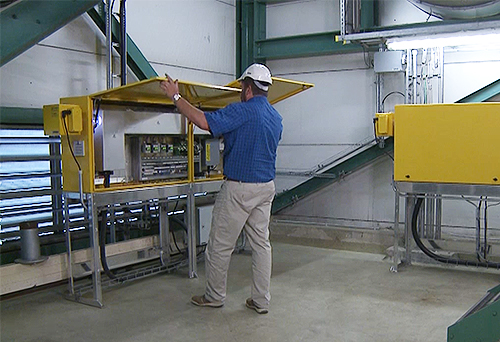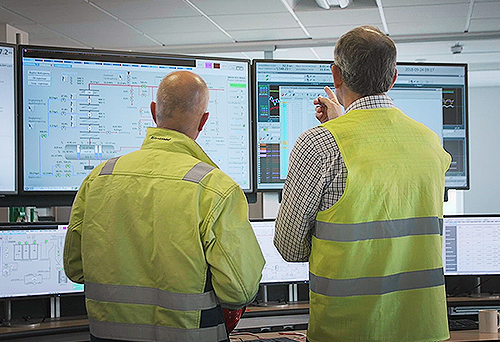Monitoring elemental and total mercury
There is a risk of toxic mercury being released into the air at for example waste incineration and cement production, and from coal-fired thermal power plants. To prevent this, there are requirements for flue gas treatment with low emission limits, and requirements for monitoring of the levels not exceeding these limits. OPSIS offers well-proven and certified systems for the required monitoring of mercury levels, both elemental mercury and the mercury compounds collectively known as total mercury, including for example mercuric chloride (HgCl2), which are known as total mercury.
ONE SYSTEM for all gases
The OPSIS system for monitoring elemental mercury often monitors in the raw gas, immediately after combustion. The monitoring results are used to control flue gas treatment in real time, which often involves the injection of activated carbon. In this way, the flue gases can be treated in the best way both with regard to the environment and to operating finances. Monitoring of total mercury takes place in the clean gas, just before it is released into the ambient air. This provides monitoring of the flue gas treatment and that the emission limits are not exceeded.
A total mercury monitoring system from OPSIS can easily be supplemented for monitoring of other types of gases. This provides a cost-effective and easy-to-maintain system for all emissions monitoring. More information can be found on our application pages on waste incineration, cement production, and power plants, among others.

CERTIFIED MONITORING SYSTEMS for TOUGH ENVIRONMENTS
The OPSIS monitoring systems are based on gas analysers that have short response times, are accurate, and require minimal maintenance. The monitoring takes place contact-free along light beams where gas molecules can absorb parts of the light. In process monitoring of elemental Hg, light beams are sent through the gas duct or part of the gas is led into a measurement cell through which the light is led. When monitoring emissions of THg, part of the process gas is led via a converter into a measurement cell through which the light is sent. The light is captured and led via optical fibres to the analyser which measures the absorption and calculates the gas concentrations.
A single analyser can measure several types of gases in several gas channels. It provides a very cost-effective monitoring system. In addition to monitoring the levels of Hg and/or THg, the concentrations of many other types of gases can also be monitored, such as NOX, SO2, CO2, CO, NH3, H2O, HF, and HCl.

GAS ANALYSIS WITH OPSIS
There are multiple reasons for choosing OPSIS as supplier of systems for gas analysis. Among the key benefits of the methods and solutions offered by OPSIS are:
- total mercury emissions monitoring
- raw-gas mercury monitoring with cross-stack technology
- one system for all components including mercury
- a single system can measure at several monitoring points
- combines the benefits of the UV-DOAS, FTIR-DOAS, and TDL techniques
- best performance according to QAL1 certification
- longest calibration interval according to QAL1 certification
- optional automatic QAL3 control
- non-contact monitoring, no sampling
- long maintenance interval
- low energy consumption
- gas calibration only once a year
- thousands of systems installed worldwide
- certified by, among others, German TÜV and under British MCERTS standards.




